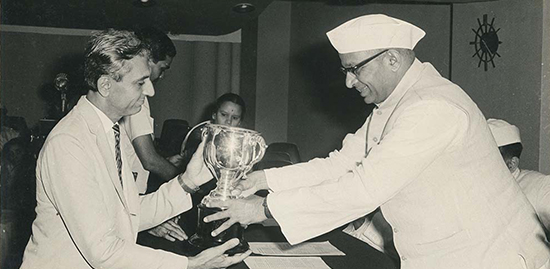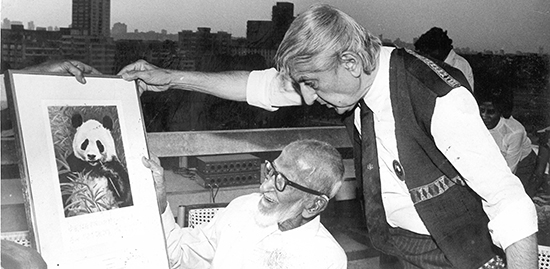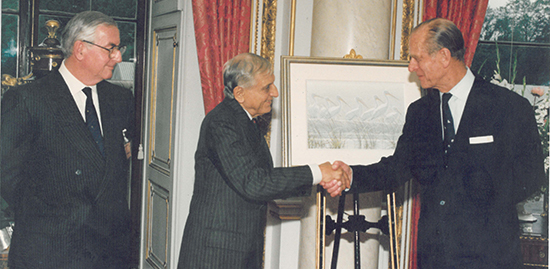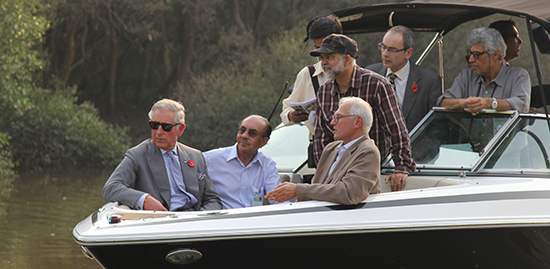History
1940s
In 1985, the Soonabai Pirojsha Godrej Foundation was set up to formalize the efforts of Godrej towards the conservation of the mangrove ecosystem of Vikhroli along the West bank of the Thane creek. This pioneering conservation initiative took roots way back in the 1940s. Godrej acquired several hundred acres of land in 1948 for setting up an Industrial Garden Township for their business that was growing exponentially. This land comprised a large area of luxuriant mangroves along the eastern boundary skirting the Thane Creek. Considering the rich biodiversity of mangrove forests, Godrej took all efforts for protection right from the beginning. Realizing the importance of this usually neglected ecosystem, late Shri. Sohrabji P. Godrej and late Shri. Naoroji P. Godrej focused on conserving this vast ecologically sensitive area, striking a delicate balance between the industrial activities and nature conservation.
1980s
This further led to the creation of the Soonabai Pirojsha Godrej Marine Ecology Centre in 1985, whereby all the land with mangroves cover was brought under conservation. With practically zero awareness about mangroves in the country and the lack of proper legislation for protection of this fragile ecosystem, a unique initiative of this nature could only exist because of the foresight of these pioneers. One of the most important milestones along this journey is a doctorate study on ‘Vikhroli Mangroves: Conservation and Management’ during 1985 to 1992 supported by late Shri Sohrabji P. Godrej. The study provided important insights into the mangrove ecosystem and a roadmap for its conservation. The formation of the “Mangroves Project”, now known as the Wetland Management Services (WMS), offered a distinct identity and adequate resources to its conservation initiatives.
1990s
Since then, Godrej's mangrove conservation initiatives have moved far beyond a philanthropic endeavor to a fully devoted department under Integrated Management System in the changing legal and industrial environment. With the three-pronged strategy of research, conservation and awareness, Godrej mangroves in all likelihood became India's first ISO 14001 certified forest in 1997. The certification ensured time-bound, measurable performance indicators and targets for conservation initiatives. In 1999, Godrej planned and implemented large-scale mangrove plantation of around 80 acres at its southern border for the Municipal Corporation of Greater Mumbai. It was the first successful major mangrove plantation in the state of Maharashtra, inspiring the State Forest Department, NGOs and academic circles to undertake mangrove plantation all along the coastlines. The plantation reduced saline blanks - the indicators of degradation of mangrove ecosystem and improved the geology and hydrology for robust growth of mangroves.
2000s
By 2000, the mangrove ecosystem of Pirojshanagar stabilized with visible enhancement in its biodiversity. In 2002, Godrej extended the research and educational benefits of mangroves at Pirojshanagar to the Mumbai Metropolitan Region by appointing a dedicated Education Officer. In the following years, a remarkable increase in the Godrej mangrove project's outreach to NGOs and CBOs, academic and research institutes, citizen forums and other stakeholders is seen. Godrej has systematically enhanced the quality and outreach of awareness initiatives. Inside the organisation, a mangrove awareness programme is integrated in the corporate induction plan designed for each new employee joining the organisation. With this, environment conservation information and values are imparted to every Godrej employee. The Wetland Management Services team has introduced celebration of six environmental events to celebrate the biodiversity of Pirojshanagar. World Wetland Day, Earth Hour, World Environment Day, Van Mahotsav, World Mangrove Day and Wildlife Week engage Godrej's business units, township residents, and students of Udayachal primary and high schools. The enthusiastic response from Udayachal schools led to the formation of a 'Mangrove Club' dedicated to the cause of mangrove awareness. It continues to conduct its activities in addition to those of the Nature Club for high school students.
2010s
Godrej continues to enhance its level of commitment to environmental sustainability having voluntarily adopted the CII Code for Ecological Sustainable Business, practicing the EFQM Business Excellence Model, participating in the India Business Biodiversity Initiative, obtaining certifications like IGBC Green Building and GreenCo Ratings and reporting its sustainability performance using the Global Reporting Initiative framework for all of its businesses. The integration of mangrove conservation in these sustainability initiatives completed the shift in the organization’s approach from philanthropy to business process. Godrej Group, the custodian of large chunk of Mumbai’s mangroves, commits to its conservation with systemic approach.





